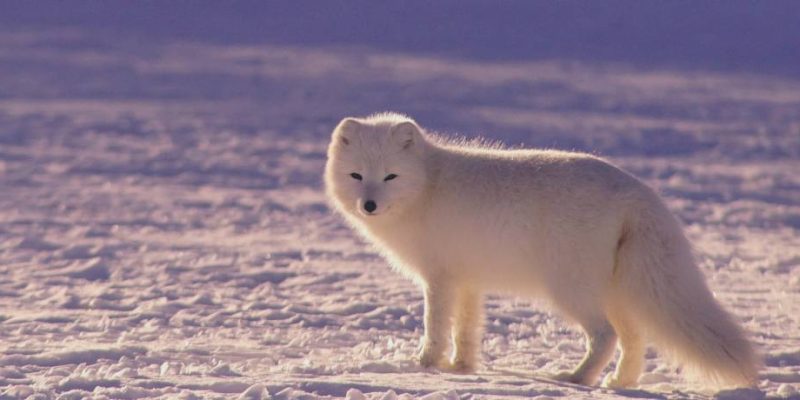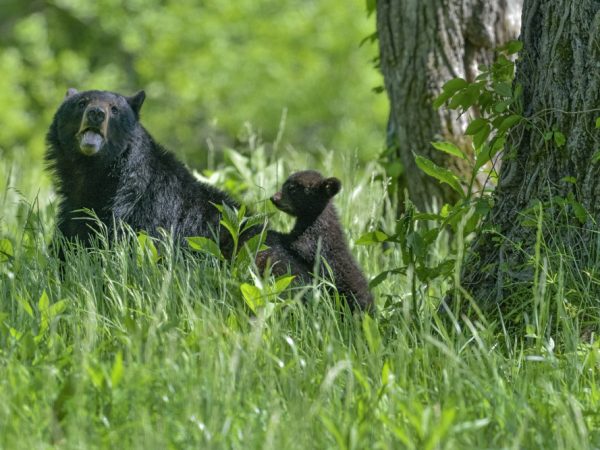What Animals Live in the Arctic? 10 Fascinating Species You Need to Know

The Arctic is a land of extremes, with its freezing temperatures, icy landscapes, and unique ecosystem. Despite the harsh conditions, the region is home to a variety of remarkable species. From creatures that have adapted to the icy waters to those that thrive on land, the Arctic is teeming with life. This article explores what animals live in the Arctic, highlighting ten fascinating species that have mastered survival in one of the planet’s most challenging environments.
What Animals Live in the Arctic: Polar Bears: The Kings of the Ice
When you think about the Arctic, the first animal that probably comes to mind is the polar bear. These magnificent creatures are perfectly adapted to the frozen tundra. They have thick, insulating fur that keeps them warm in freezing temperatures, and their large paws act like snowshoes, enabling them to walk across the ice with ease. Polar bears are excellent swimmers and can travel long distances in search of food, primarily relying on seals. They are truly iconic symbols of the Arctic and its unique wildlife.
What Animals Live in the Arctic: Arctic Fox: Masters of Adaptation
The Arctic fox is another iconic animal of this cold, harsh region. These small mammals have evolved to thrive in the freezing temperatures of the Arctic. Their thick fur changes color with the seasons, turning white during the winter months to blend in with the snow and ice. In summer, their fur turns a brownish-gray to help them camouflage with the tundra. The Arctic fox is a skilled hunter, often feeding on small rodents, birds, and even scavenging from larger predators.
What Animals Live in the Arctic: Walruses: Giants of the Arctic Waters
Walruses are large, blubbery animals that can be found in the icy waters and coastal areas of the Arctic. They are easily recognizable by their long tusks and thick skin. These marine mammals are social creatures, often seen in large groups hauled out on the ice. Walruses rely on their tusks to help them haul their massive bodies out of the water and onto ice floes. They primarily feed on benthic invertebrates such as clams and snails, diving to the ocean floor to forage.
What Animals Live in the Arctic: Caribou: The Arctic Nomads
Caribou, also known as reindeer in some parts of the world, are one of the most important herbivores in the Arctic ecosystem. They are known for their incredible migrations, which can span thousands of miles. These animals are well-equipped to survive in the Arctic’s frigid environment, with thick fur and hooves that help them traverse deep snow. Caribou are herbivores, feeding on mosses, lichens, and grasses, and they play a crucial role in the Arctic food chain, serving as prey for predators like wolves and bears.
What Animals Live in the Arctic: Arctic Wolves: The Fearless Hunters
The Arctic wolf is a powerful predator that thrives in the icy landscapes of the North. Unlike other wolves, Arctic wolves have adapted to survive in extreme cold, with shorter ears and a thicker, denser coat. These wolves are highly skilled hunters, preying on caribou, musk oxen, and smaller mammals. They are known for their pack mentality and can travel long distances in search of food. Their ability to withstand the freezing temperatures and their strong hunting skills make them one of the top predators in the Arctic.
What Animals Live in the Arctic: Musk Oxen: Prehistoric Survivors
Musk oxen are large, shaggy mammals that are well-suited for life in the Arctic. Their thick fur and woolly undercoat protect them from the freezing temperatures, while their hooves help them navigate through deep snow. Musk oxen are herbivores, feeding on grasses, shrubs, and mosses. Despite their large size, they are social animals that live in herds and often work together to protect themselves from predators like wolves and bears. Their horns, which curve outward, are used in territorial battles and to protect their young.
What Animals Live in the Arctic: Narwhals: The Unicorns of the Sea
Narwhals are one of the most mysterious and fascinating animals of the Arctic. Known for their long, spiral tusks, which are actually elongated teeth, narwhals are unique among whales. These marine mammals can be found in the icy waters of the Arctic Ocean, where they dive to great depths in search of food. Narwhals primarily feed on fish and squid, using their tusks to break through the ice in search of breathing holes. Their incredible tusks are thought to have sensory capabilities, helping them navigate the icy waters.
What Animals Live in the Arctic: Beluga Whales: The Arctic’s “Canaries”
Beluga whales are small, white whales that live in the icy waters of the Arctic. Known for their vocalizations, which sound similar to the calls of birds, belugas are sometimes called the “canaries of the sea.” They are highly social creatures, living in large pods that can consist of dozens of individuals. Belugas feed on fish, shrimp, and other small marine life, and they have adapted to life in the Arctic by having a thick layer of blubber to keep warm. These whales are also known for their playful nature and intelligence.
What Animals Live in the Arctic: Snowy Owls: Silent Hunters of the Tundra
Snowy owls are one of the most iconic birds of the Arctic. With their striking white feathers, they blend perfectly with the snowy landscape, making them highly effective hunters. These owls primarily feed on small mammals, such as lemmings, which are abundant in the Arctic tundra. They have exceptional hearing and can detect prey even under the snow. Snowy owls are also known for their ability to stay warm in the harsh Arctic climate, with a thick coat of feathers that covers their legs and feet.
What Animals Live in the Arctic: Arctic Hare: Masters of Speed
The Arctic hare is a large, white hare that is well-suited for life in the Arctic. These animals have thick, insulating fur that keeps them warm in the freezing temperatures. The Arctic hare is known for its incredible speed and agility, which help it evade predators like Arctic foxes and wolves. These hares are herbivores and feed on a variety of plants, including mosses, lichens, and grasses. Their large ears help them regulate their body temperature, and they are capable of surviving in the most extreme conditions.
Conclusion
What Animals Live in the Arctic? The Arctic is home to a fascinating array of animals that have evolved to thrive in one of the planet’s most challenging environments. From polar bears and Arctic wolves to narwhals and beluga whales, these species have adapted to the harsh conditions of the frozen landscape. The animals that live in the Arctic not only survive, but they also play vital roles in maintaining the delicate balance of this unique ecosystem. As climate change continues to threaten the Arctic, it is crucial to protect these species and their habitats to ensure that future generations can continue to witness these incredible creatures.
FAQs
Q1. What is the most iconic animal that lives in the Arctic?
The polar bear is often considered the most iconic animal of the Arctic due to its adaptation to the cold environment and its role as a top predator.
Q2. Are there any mammals that live in the Arctic?
Yes, several mammals live in the Arctic, including polar bears, Arctic wolves, caribou, and musk oxen.
Q3. What animals live in the waters of the Arctic?
Marine mammals such as narwhals, beluga whales, and walruses are found in the Arctic waters, along with a variety of fish and invertebrates.
Q4. How do Arctic animals survive in such cold temperatures?
Arctic animals have adapted to the cold with thick fur or blubber, special behavioral traits, and physical adaptations such as larger bodies to conserve heat.
Q5. How do Arctic foxes adapt to the changing seasons?
Arctic foxes change their fur color with the seasons, turning white in winter to blend with the snow and brown or gray in summer for camouflage against the tundra.
Also read: Animals in the Arctic: 10 Incredible Creatures That Defy the Cold











